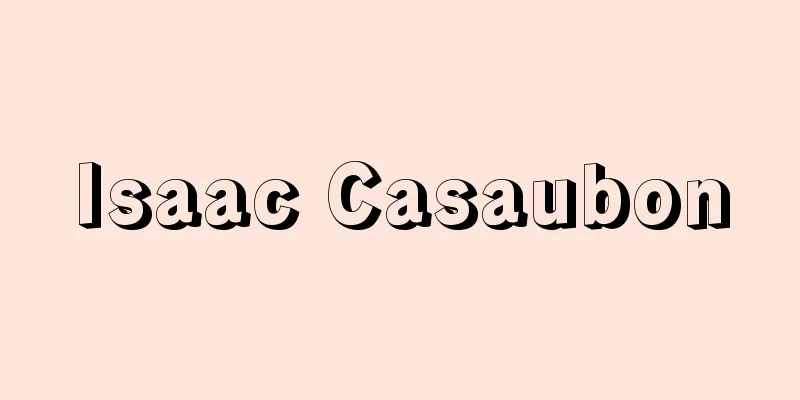Susumu Ohno

|
A Japanese linguistics scholar, born in Tokyo. Ohno's interest in the Japanese language dates back to his junior high school days. Born and raised in a merchant's family in Fukagawa, Tokyo, Ohno was a true Edokko, a downtown native. However, many of the friends he made when he entered junior high school had grown up in Yamanote. The residents of Yamanote are from other regions, such as Satsuma, Choshu, and Tosa, who migrated there after the Meiji Restoration. Ohno wondered what it means to be "Japanese," a language that is lumped together despite the use of different words and phrases, or what it means to be "Japan," a language that is treated as the same despite the lifestyles and everything else being different. In 1939 (Showa 14), he entered Tokyo Imperial University and studied under Shinkichi Hashimoto, a leading authority on Japanese language studies. In 1943, he graduated from the Department of Japanese Literature at the Faculty of Letters of the same university. In 1953, he published "A Study of Ancient Kana Usage" and in 1957, "The Origin of the Japanese Language." He studied ancient kana usage through detailed analysis of materials, and examined the changes in the number of Japanese phonological units and vocabulary throughout the ages. At the same time, he spent 20 years compiling the "Iwanami Dictionary of Ancient Japanese" (1974). He also conducted research on "The Tale of Genji" and Motoori Norinaga, and was involved in the compilation of "The Complete Works of Motoori Norinaga" from 1968 to 1975. In 1985, he published "A Dictionary of Synonymous Japanese" (co-authored with Hama Nishi Masato (1917-)). In 1993, he published "A Study of Kakari Musubi." After that, in 1999, "Japanese Practice Book" became a huge bestseller, sparking the "Japanese language boom." The basis of Ohno's Japanese language studies is a thorough attention to each and every word. He examines everything from the meaning of words to their pronunciation. He does not only focus on language, but also on history, religion, cultural anthropology, and other fields for thorough verification. In the late 1970s, Ohno pointed out the strong relationship between Japanese and Tamil, and suggested that they may have the same origin. This was the "Japanese-Tamil common ancestry theory." He published "Japanese and Tamil" in 1981. Tamil is a language of southern India, but not only do Japanese have many words that are phonetically similar, but they also have many commonalities, such as grammatical structure, linking, and five-seven rhythm. Furthermore, since many of the words common to Japanese and Tamil are related to rice cultivation, Ohno speculates that there may have been a close relationship between the spread of rice cultivation and the influence of Tamil. He inferred that Tamil people arrived in Kitakyushu at the end of the Jomon period, bringing with them rice cultivation, the use of metal, weaving, and the Tamil language. This theory has caused fierce debate both inside and outside of academia since it was first announced. In his 2000 book The Formation of the Japanese Language, he explained this theory as a creole phenomenon of Tamil and Jomon, completing the theory of common ancestry. [Akira Nagae October 19, 2018] "A Study of Ancient Kana Usage - Focusing on the Kana in the Nihon Shoki" (1953, Iwanami Shoten)" ▽ "The World of Japanese, by Ohno Susumu (1976/New Edition, 1993, Asahi Shimbun)" ▽ "Japanese Language and Tamil" (1981, Shinchosha)" ▽ "Kana Usage and Ancient Language, by Ohno Susumu (1982, Iwanami Shoten)" ▽ "Grammar and Vocabulary, by Ohno Susumu (1987, Iwanami Shoten)" ▽ "Yayoi Culture and Japanese, by Ohno Susumu et al. (1990, Kadokawa Shoten)" ▽ "A Study of Linking Forms" (1993, Iwanami Shoten) ▽ "The Formation of the Japanese Language" (2000, Iwanami Shoten) "The Origin of the Japanese Language, Tracing the Japanese Language, Considering Japanese Grammar, Before the Japanese Language, Japanese Language Workbook, In Search of the Origins of the Japanese Language (Iwanami Shinsho)" ▽ "Iwanami Dictionary of Classical Japanese, edited by Ohno Susumu et al. (1982, Iwanami Shoten)" ▽ "Dictionary of Synonyms and Japanese Language, by Ohno Susumu and Hamanishi Masato (1985, Kadokawa Shoten)" ▽ "Complete Works of Motoori Norinaga, edited and revised by Ohno Susumu and Okubo Tadashi, 20 volumes and 3 supplementary volumes (1989-1993, Chikuma Shobo)" [References] | | |Source: Shogakukan Encyclopedia Nipponica About Encyclopedia Nipponica Information | Legend |
|
日本語学者。東京に生まれる。大野が日本語に関心を抱き始めたのは、中学生時代にさかのぼる。東京・深川の商家に生まれ育った大野は、生粋(きっすい)の江戸っ子、下町っ子であった。ところが中学校に入って得た友人の多くは山手(やまのて)育ちだった。山手の住人は、明治維新後に旧薩摩や長州、土佐などから移住してきた地方出身者である。使用する単語も言い回しも違うが、同じことばとしてひとくくりにされる「日本語」とは何か、あるいは、生活習慣もなにもかも違うのに同一のものとして扱われる「日本」とは何か、と大野は考えたのだった。 1939年(昭和14)東京帝国大学に入学、日本語学の泰斗橋本進吉に師事する。1943年同大学文学部国文学科卒業。 1953年に『上代仮名遣(かなづかい)の研究』、1957年に『日本語の起源』を発表。資料の綿密な分析を通じて上代仮名遣いを研究し、各時代における日本語の音韻数の変遷および語彙の変化を考証する。それと並行して、『岩波古語辞典』(1974)を20年かけて編纂。『源氏物語』や本居宣長(もとおりのりなが)についての研究も行い、1968~1975年『本居宣長全集』の編纂に関わる。1985年『類語国語辞典』(浜西正人(はまにしまさと)(1917― )との共著)を上梓(じょうし)。1993年(平成5)『係り結びの研究』を発表。その後1999年『日本語練習帳』が大ベストセラーとなり、「日本語ブーム」のきっかけをつくる。 大野の日本語学の基本は、一つ一つの単語に対する徹底的なこだわりである。ことばの意味から発音にいたるまで厳密に考証していく。また、言語だけを対象とするのではなく、歴史学はもとより宗教学や文化人類学なども動員して徹底検証していく。 1970年代末、大野は日本語とタミル語との強い関連性を指摘し、同一の起源をもつのではないかと唱えた。「日本語・タミル語同祖説」である。1981年『日本語とタミル語』発表。タミル語はインド南部の言語であるが、単に音韻が対応する単語が日本語に多いというだけでなく、文法構造や係り結び、五七韻律など、共通する部分が多くある。また、日本語とタミル語とで共通する単語には稲作に関するものが多いことから、稲作の伝播(でんぱ)とタミル語の影響には密接なかかわりがあったのではないかと大野は推定する。縄文時代末期に、タミル人が北九州に到来し、稲作や金属の使用、機(はた)織りなどとともにタミル語をもたらしたのではないかと推論したのだ。この説は発表当初から学界内外で激しい論議を招いた。2000年発表の『日本語の形成』では、この説をタミル語と縄文語のクレオール現象として説明し、同祖説の総仕上げを行った。 [永江 朗 2018年10月19日] 『『上代仮名遣の研究――日本書紀の仮名を中心として』(1953・岩波書店)』▽『大野晋著『日本語の世界』(1976/新版・1993・朝日新聞社)』▽『『日本語とタミル語』(1981・新潮社)』▽『大野晋著『仮名遣と上代語』(1982・岩波書店)』▽『大野晋著『文法と語彙』(1987・岩波書店)』▽『大野晋他著『弥生文化と日本語』(1990・角川書店)』▽『『係り結びの研究』(1993・岩波書店)』▽『『日本語の形成』(2000・岩波書店)』▽『大野晋著『日本語の起源』『日本語をさかのぼる』『日本語の文法を考える』『日本語以前』『日本語練習帳』『日本語の源流を求めて』(岩波新書)』▽『大野晋他編『岩波古語辞典』(1982・岩波書店)』▽『大野晋・浜西正人著『類語国語辞典』(1985・角川書店)』▽『大野晋・大久保正編集校訂『本居宣長全集』20巻・別巻3(1989~1993・筑摩書房)』 [参照項目] | | |出典 小学館 日本大百科全書(ニッポニカ)日本大百科全書(ニッポニカ)について 情報 | 凡例 |
>>: Shurisuke Ohno - Shurisuke Ohno
Recommend
Willard, FE
…In addition to the university, the university is...
Zigmo (earth spider) - Atypus karschi
A spider of the family Zygidae (illustration). It ...
Osteopathy
...Along with Anma and Massage, it is one of the ...
Pendulum - Buri-kko
〘 noun 〙 A person who behaves like a cute and good...
Community psychiatry
It is a new field of psychiatry that emerged after...
"Memoirs of a Revolution"
…In the February Revolution of 1917, he contribut...
Electric guitar (musical instrument) - ereki
...A guitar that can amplify sound and change ton...
thesmothetai
...the archon, whose name became the custom for t...
Azuma Koto Song - Azuma Koto Song
...Along with the "Nosaimono" pieces, w...
Yamiichi (black market) - Yamiichi
A group of street vendors selling daily necessitie...
Iwasaki Uprising
...It is thought to have been around July 1591. L...
Vacuum oxygen decarburization
...For this purpose, oxygen gas is mixed with arg...
Dodder vine - Dodder vine
An annual vine in the Convolvulaceae family (APG ...
Kanto Gundai - Kanto Gundai
A job title in the Edo Shogunate. A local officia...
Undersea topography - Kaiteikei
The undulating form of the ocean floor. Generally...


![Manba [town] - Manba](/upload/images/67ccee5a59692.webp)






